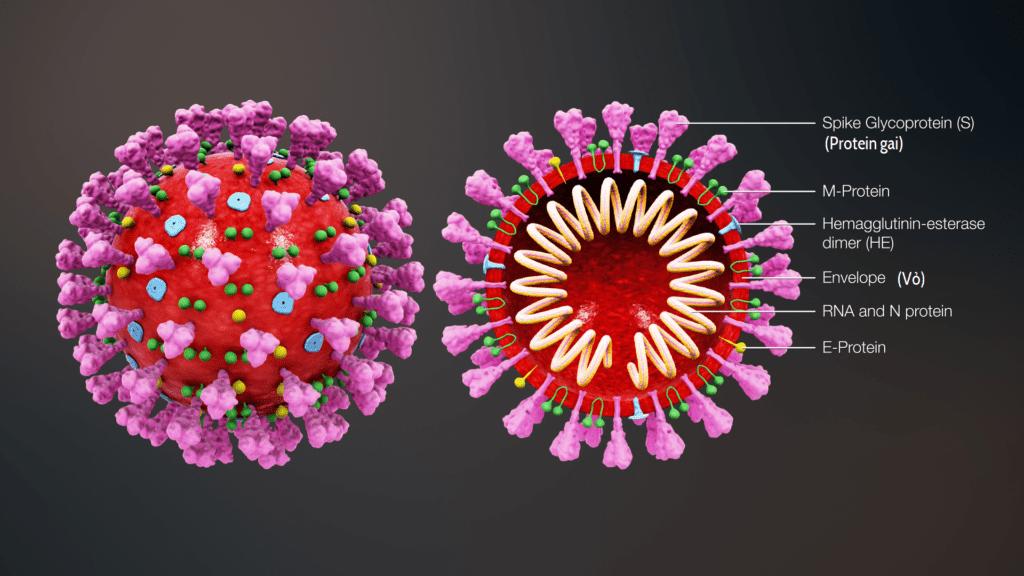
The novel coronavirus doesn’t infect all cells of the body equally. Its infectious potential is mediated by the expression of certain genes. By exploiting a massive genetic database, scientists at MIT and Harvard University were able to identify the specific types of cells that SARS-CoV-2, the coronavirus that is causing the COVID-19 pandemic, is able to infect.
“Our goal is to get information out to the community and to share data as soon as is humanly possible, so that we can help accelerate ongoing efforts in the scientific and medical communities,” said Alex K. Shalek, associate professor of chemistry at MIT and co-author of the new study.
The lock and keys of the coronavirus
Not long after it was first signaled in Wuhan, China, scientists sequenced the genome of the novel coronavirus in record time so as to find any chink in its armor.
They learned that like other coronaviruses before it, such as those responsible for the SARS and MERS epidemics, the novel coronavirus employs a viral “spike” protein to bind to a receptor on human cells known as angiotensin-converting enzyme 2 (ACE2).
After binding, the virus uses an enzyme called TMPRSS2 that activates the spike protein allowing the virus entry inside the cell.
Both types of protein are required for SARS-CoV-2 to infect a cell and start replicating.
“As soon as we realized that the role of these proteins had been biochemically confirmed, we started looking to see where those genes were in our existing datasets,” said Jose Ordovas-Montanes, senior author of the new study and a former MIT postdoc who now runs his own lab at Boston Children’s Hospital. “We were really in a good position to start to investigate which are the cells that this virus might actually target.”
Previously, Shalek and colleagues across the world studied tens of thousands of human, non-human primate, and mouse cells to see which genes are turned on in a given cell type. Much of this data came from labs affiliated with the Human Cell Atlas, which seeks to catalog the distinct patterns of gene activity in every cell of the human body.
This huge collection of databases was partially stored in one master dataset compiled by the Broad Institute of MIT and Harvard.
The researchers didn’t look at the RNA sequence of every cell, but instead focused their attention on cells from organs known to be affected by COVID-19 infections, such as the lungs, nasal passages, and intestines. The results were then compared to cell types from unaffected organs.
According to the results, the virus infects globlet secretory cells in the nasal passages. These cells, which are tasked with producing mucus, express the genes for both of the proteins required by the virus to bind to and infect cells.
In the lungs, RNA for both proteins were mainly found in type II pneumocytes, which line the air sacs of the lungs and are responsible for keeping them open.
Cells known as absorptive enterocytes in the intestines expressed RNA for both viral essential proteins more than any other intestinal cell type.
“This may not be the full story, but it definitely paints a much more precise picture than where the field stood before,” Ordovas-Montanes says. “Now we can say with some level of confidence that these receptors are expressed on these specific cells in these tissues.”
Hijacking the body’s own defense mechanism
Perhaps the most surprising finding of the study was that expression of the gene for ACE2 also correlated with the activation of genes that turn on interferon production.
Interferon is a protein produced by the body to fight off viral infections by disrupting viral replication and activating immune cells. For this reason, interferon therapy is widely used to treat hepatitis B and hepatitis C.
But in the context of a COVID-19 infection, the role of interferon is unclear.
On one hand, the virus targets interferon-stimulating genes as a way to infect cells. On the other hand, the interferon production should also block the viral production of SARS-CoV-2.
It is possible that the virus has found a sweet spot, essentially hijacking the body’s defenses against viral infections for its own purposes.
“It’s hard to make any broad conclusions about the role of interferon against this virus. The only way we’ll begin to understand that is through carefully controlled clinical trials,” Shalek says. “What we are trying to do is put information out there, because there are so many rapid clinical responses that people are making. We’re trying to make them aware of things that might be relevant.”
The findings appeared in the journal Cell.






